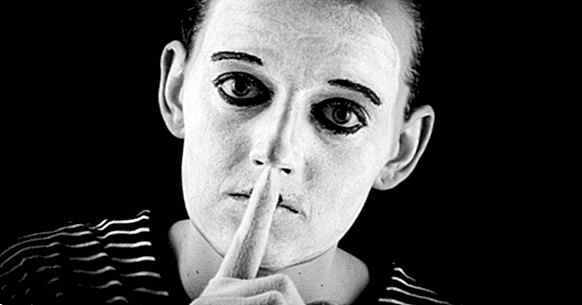Spiral of silence: what is it and what are its causes?
Frequently people we hide our opinions when they are minority and controversial for fear that other people reject us or receive some kind of punishment for doing so. This phenomenon was described by Elisabeth Noelle-Neumann, who called it "spiral of silence".
In this article we will describe what is the spiral of silence and what are the causes of this kind of social pressure. We will also make a brief description of some of the most frequent criticisms about the Noelle-Neumann theory.
- Maybe you're interested: "12 essential books by Noam Chomsky"
What is the spiral of silence?
The German political scientist Elisabeth Noelle-Neumann proposed in his book The spiral of silence. Public opinion: our social skin the concept of "spiral of silence", which is used to describe the tendency that we show people not to publicly expose our opinions when we are aware that these are not majority.
According to this author, for a majority opinion to be able to promote a spiral of silence must contain an ethical component . In this way, there would hardly be a social pressure of this type around whether or not the pineapple is an acceptable ingredient for pizza, although it is about the morality of abortion or the death penalty.
The theory of the spiral of silence is based on a series of related hypotheses.
- Most people fear social isolation.
- Consequently, we observe the behavior of others to identify which opinions and behaviors are socially acceptable.
- The isolation or social rejection of unpopular opinions manifests itself in gestures such as turning the face or maintaining silence.
- People tend to hide our views when we have the expectation that we will receive these types of responses.
- Those who hold majority opinions express them publicly without fear.
- The spiral of silence is triggered by the repeated expression of the majority opinion and the concealment of minority groups.
- This process happens around controversial issues, not when there is consensus.
- The number of people who defend an opinion is not always relevant.
- The concealment of divergent opinions usually has an unconscious character.
- Public opinion exercises a role of social control in a given time and space and may vary depending on these dimensions.
- The spiral of silence resolves conflicts by favoring one of the opinions that exist in this respect, fulfilling an integration role.
Causes of this phenomenon
Noelle-Neumann affirmed that the spiral of silence is mainly due to two types of fear: the one that we feel to be socially isolated and the fear of even more significant consequences. The intensity of these fears can vary by different factors, which influences the degree of resistance to show a divergent opinion.
In the first case, we are usually afraid of being rejected by others in response to the expression of unpopular points of view. This could be the case of an economics student who sympathizes with communism and avoids expressing it to his professors and colleagues, who are mostly neoliberal.
However, sometimes giving our opinion may involve risks even greater than the decrease in acceptance by our environment; For example, a person who opposes the methods or objectives of their superiors in front of their coworkers is in danger of being fired.
The spiral of silence is generated when the person who has a divergent opinion listens to others fervently defending the majority point of view, and is reinforced again each time this happens again. Thus, we feel less free to express a minority opinion the more popular is the dominant one.
The mass media are a fundamental tool in the development of spirals of silence. This is due not only to the fact that they collect majority points of view, but also because they influence a large number of people; and since they can generate majority opinions, they also create the corresponding spirals of silence.
The approaches of Noelle-Neumann imply that people have an intuitive capacity to identify what is the dominant opinion around a given topic. It is important to bear in mind that the correctness of these personal hypotheses may vary depending on the person and the specific situation.
- Maybe you're interested: "The 11 types of violence (and the different kinds of aggression)"
Criticism to this theory
Criticisms have been raised to different aspects of the theory of the spiral of silence that question its theoretical validity and its explanatory capacity.In any case, and despite its shortcomings, the concept proposed by Noelle-Neumann is useful to conceptualize some aspects of reality.
In this sense, the concept of the "noisy minority", which can be as influential as a majority . The spiral of silence, therefore, is not immutable nor does it affect all persons or groups equally; likewise, a minority opinion can become a majority opinion, even in a short period of time.
On the other hand the Internet boom has led to a decrease in the weight of the mass media in public opinion. Networks greatly facilitate the dissemination of minority opinions, as well as data (real or false) that sustain them and that question the points of view defended by the status quo.
- Related article: "The 12 warning signs of fascism according to Umberto Eco"
Bibliographic references:
- Noelle-Neumann, E. (1984). The Spiral of Silence: Public Opinion - Our social skin. Chicago: University of Chicago.
- Noelle-Neumann, E. (1991). The theory of public opinion: The concept of the Spiral of Silence. In J. A. Anderson (Ed.), Communication Yearbook 14, 256-287. Newbury Park, California: Sage.



















